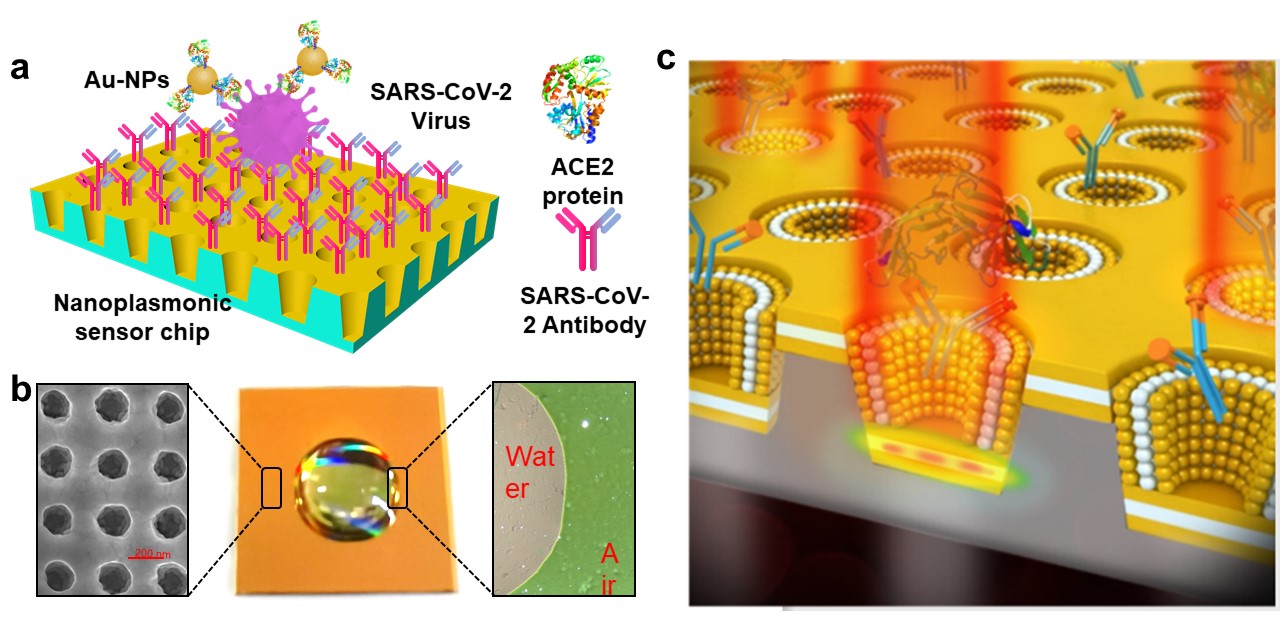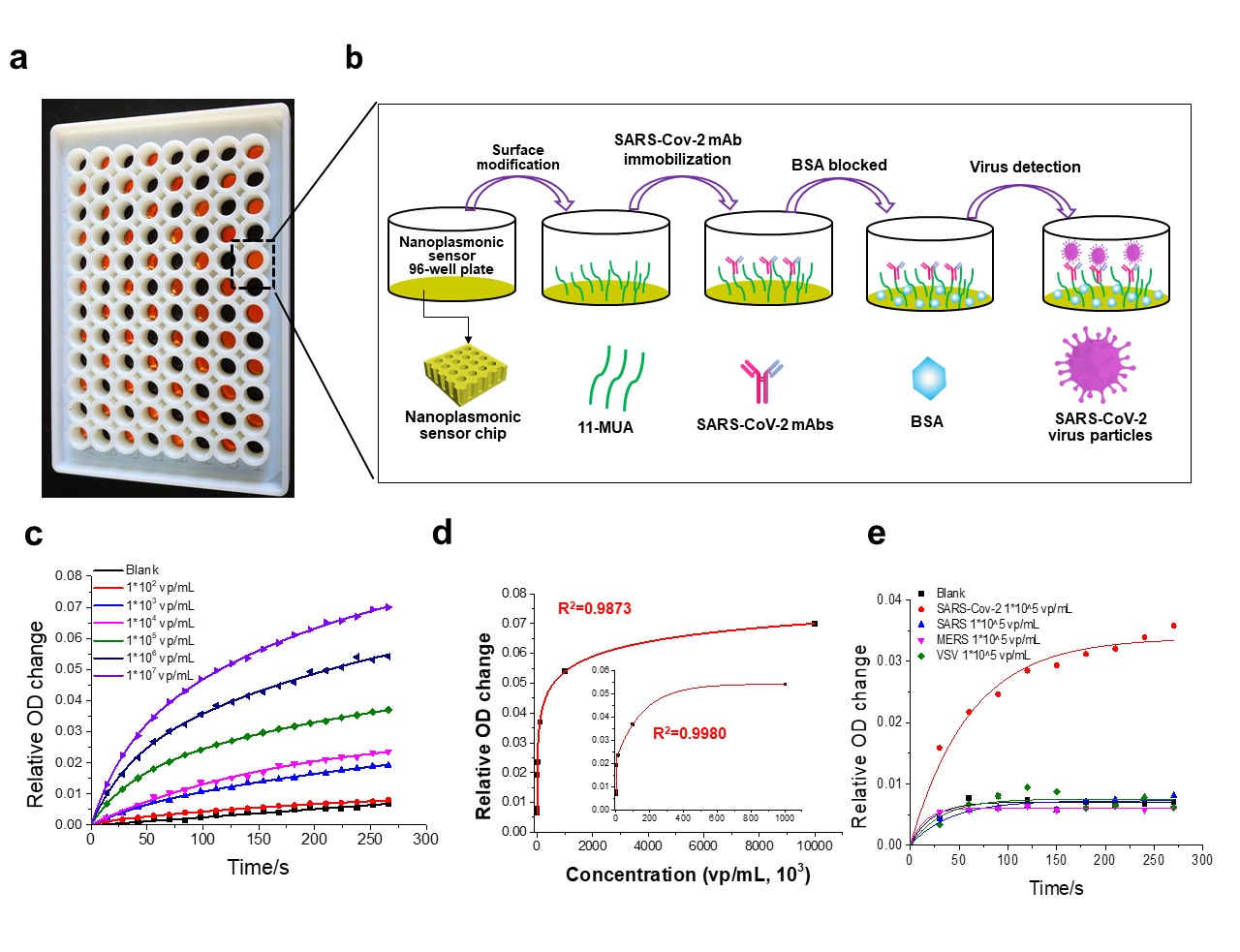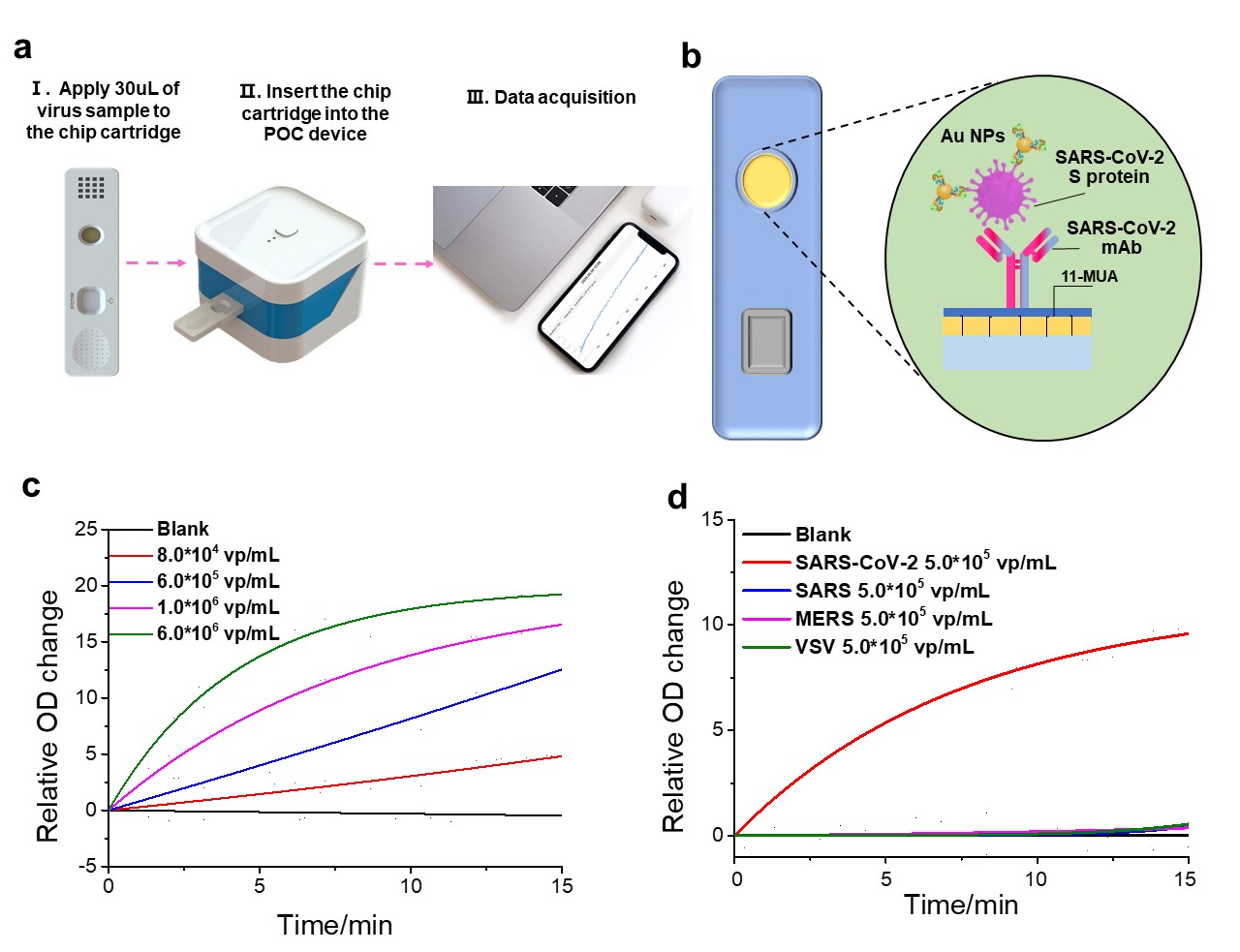(Correspondent Dandan Wang)The spread of SARS-CoV-2 virus in the ongoing global pandemic has led to infections of millions of people and losses of many lives. The rapid, accurate and convenient SARS-CoV-2 virus detection is crucial for controlling and stopping the pandemic. Diagnosis of patients in the early stage infection are so far limited to viral nucleic acid or antigen detection in human nasopharyngeal swab or saliva samples. Recently, professor Gang Liu’s group published their latest work in Biosensors and Bioelectronics, entitled "One-step rapid quantification of SARS-CoV-2 virus particles via low cost nanoparticle sensors in generic microplate reader and point of care device " (DOI:https://doi.org/10.1016/j.bios.2020.112685 ). Biosensors and Bioelectronics are the top journals of international engineering science and technology. The latest impact factor is 10.25, which is in the top 10% of ESI. The first author of this paper is Dr. Liping Huang, postdoctoral of Huazhong University of science and technology.

Figure 1. Label-free detection of SARS-CoV-2 pseudovirus with a nanoplasmonic sensor.
Surface plasmon resonance (SPR) sensing is a promising label free and one-step virus detection method and has been used in rapid viral particle detection such as SARS/MERS,H1N1 and H7N9, etc. Once the viral particles are captured by the monoclonal antibody immobilized on the SPR sensor chip surface, the plasmon resonance wavelength or intensity change induced by the virus particle presence can be measured by an optical sensing system. However conventional SPR testing equipment are bulky and not affordable to most research and clinical institutions especially in developing countries and resources limited settings. Therefore the SPR virus detection, although often showed in research labs, rarely becomes a viable method accessible to clinical and point-of-care applications. In their latest work, they developed a method for rapid and direct optical measurement of SARS-CoV-2 virus particles in one step nearly without any sample preparation using a spike protein specific nanoplasmonic resonance sensor. As low as 370 vp/mL were detected in one step within 15 minutes and the virus concentration can be quantified linearly in the range of 0 to 107 vp/mL. Measurements shown on both generic microplate reader and a handheld smartphone connected device suggest that our low-cost and rapid detection method may be adopted quickly under both regular clinical environment and resource-limited settings.

Figure 2. (a) Integration of the nanoplasmonic sensor chip with a standard 96-well plate. (b) Schematic of nanoplasmonic sensor chip surface functionalization as well as capturing and detecting SARS-CoV-2 pseudovirus. (c) SARS-CoV-2 mAbs labeled AuNP enhanced binding curves with different concentrations of the SARS-CoV-2 pseudovirus over the range 0 to 1.0 × 107 vp/mL. (d) SARS-CoV-2 mAbs labeled AuNP enhanced SARS-CoV-2 pseudovirus standard curve (R2 = 0.994). (e) Specificity verification test of AuNP-enhanced SARS-CoV-2 pseudovirus detection: Dynamic binding curves of SARS-CoV-2 antibodies interaction with different pseudovirus of SARS-CoV-2, SARS, MERS, and VSV at the concentration of 1.0× 105 vp/mL.

Fig. 3. Detection of SARS-CoV-2 pseudovirus with nanoplasmonic sensor chips by a point-of-care device. (a) Schematic of nanoplasmonic sensor chip cartridge detecting SARS-CoV-2 pseudovirus with a low-cost handheld point-of-care testing device. (b) The illustration shows the detection process of the sensor chip cartridge for specific SARS-CoV-2 detection. (c) Dynamic binding curves of virus and antibody interaction with different concentrations of the SARS-CoV-2 pseudovirus over the range 0 to 6.0 × 106 vp/mL at the resonance wavelength. (d) Specificity verification test: Dynamic binding curves of SARS-CoV-2 antibodies interaction with different pseudovirus of SARS-CoV-2, SARS, MERS, and VSV at the concentration of 5.0× 105 vp/mL.
This research was jointly developed by Huazhong University of Science and Technology, Liangzhun (Shanghai) Industrial Co. Ltd., Wuhan Xinxin Semiconductor Manufacturing Co. Ltd., Taiwan Semiconductor Manufacturing Co. Ltd. and Shanghai Public Health Clinical Center. This work was partially supported by National Natural Science Foundation of China,Fundamental Research Funds for the Central Universities.
Link to original text:
https://www.sciencedirect.com/science/article/pii/S0956566320306746?via%3Dihub